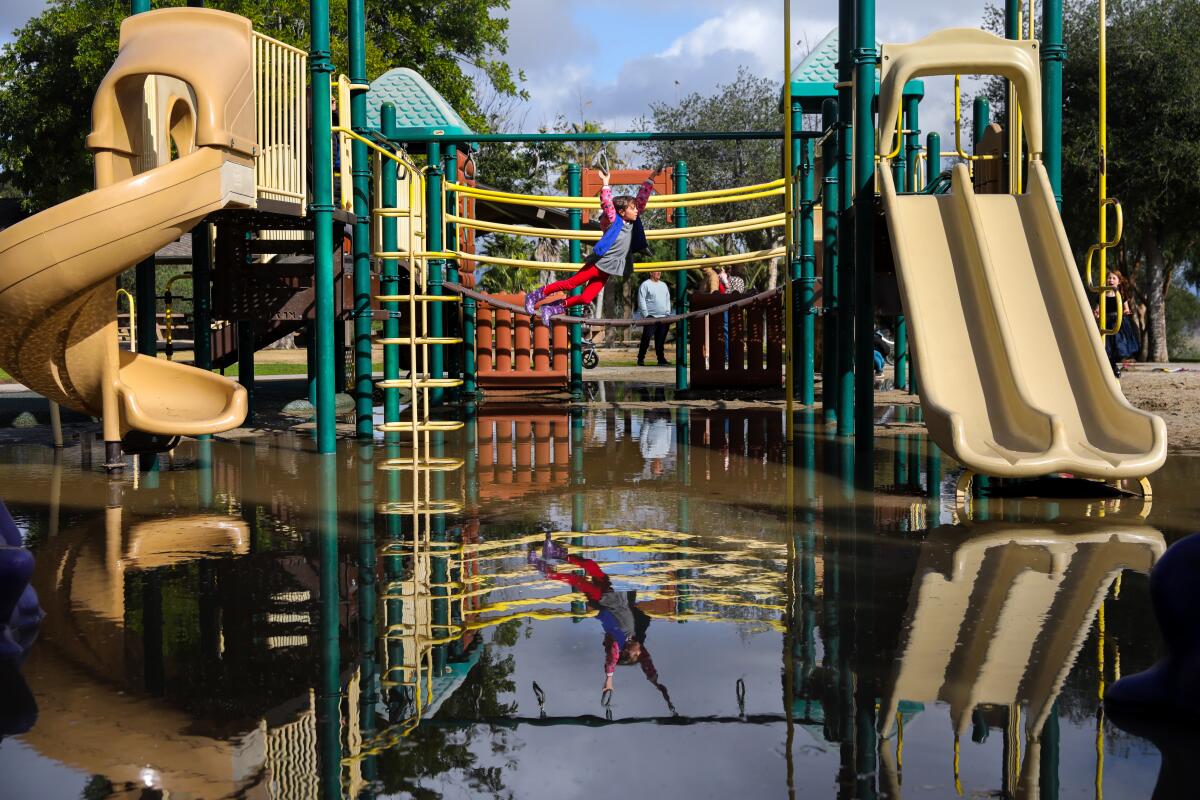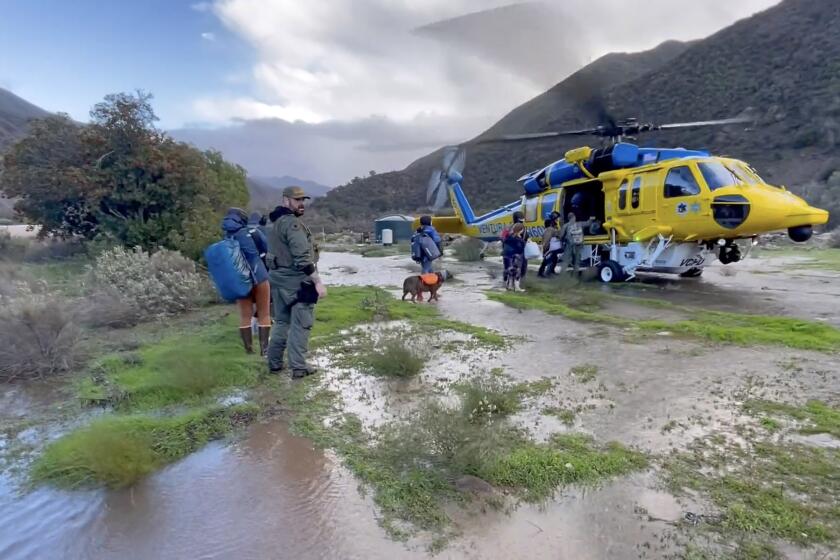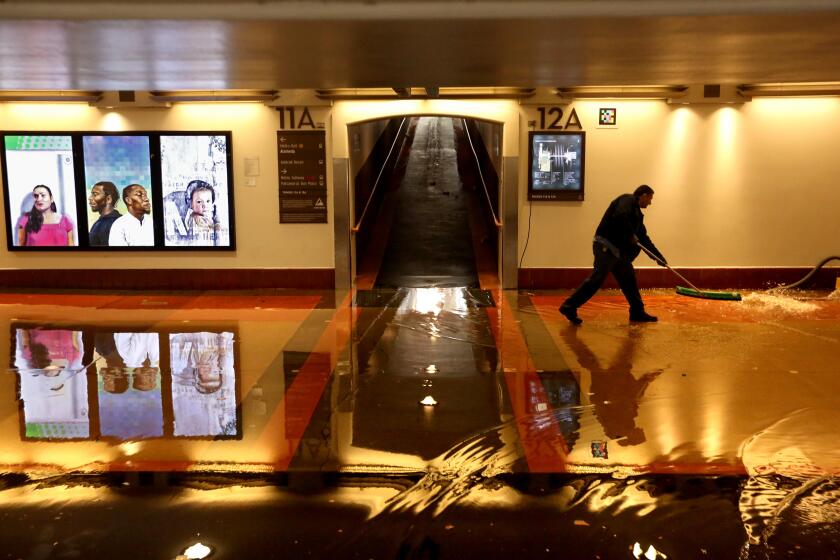Devastating storms might be over, but officials caution California to stay vigilant

As the skies begin to clear and a relentless series of atmospheric rivers starts to move out, Californians are finally catching a break as they assess the aftermath of weeks of downed trees, landslides and devastating flooding.
River levels are receding in some areas, top climate officials reported in a briefing Monday, and the worst of the rain appears to be over.
One more storm system is forecast to roll through California on Wednesday, said California State Climatologist Mike Anderson, but it won’t pack as much of a punch as the previous ones. The rain, which isn’t expected to hit farther south than Santa Barbara, appears barely strong enough to qualify as an atmospheric river.
But officials caution the public to remain vigilant. Landslides, sinkholes and other hazards could still strike because the ground has received such a soaking, and tree branches — dried up from years of drought and whiplashed by high winds — remain a deadly hazard.
On Saturday, a woman was struck dead by a falling branch in San Francisco’s Golden Gate Park, bringing the total number of storm-related deaths statewide to at least 20.
Flood watches from the National Weather Service remain in effect for some parts of the Bay Area and Central Coast, and a number of rivers in Southern California are forecast to reach close-to-flood levels later this week as excess water makes its way down the watershed.
The twice-annual “king tide,” an exceptionally high tide that occurs when the sun, moon and Earth are in gravitational alignment, is also expected to bring high water levels to the coast this weekend.
It could take weeks to clean up roads to Matilija Canyon that are covered in rocks and mud and longer to repair major damage.
Across the state, some roads remain so damaged that it will take weeks to clean up and months to repair them.
As evacuees return to their homes and businesses, the full extent of the flood damage will come to light in the coming days.
Gov. Gavin Newsom issued an executive order on Monday to bolster staffing for emergency responses, and President Biden is expected to visit the Central Coast later this week to assess what additional federal support is needed.
“Local flood managers across the state still have some work to do as the water recedes,” said Jeremy Arrich, who manages the flood division at the California Department of Water Resources.
Arrich noted that in the last two weeks, the state’s Flood Operations Center has delivered almost 1 million sandbags and deployed staff to 50 incidents to help with broken levees, erosion and sinkholes.
“Maintaining agencies will need to inspect and patrol their levees to look for any damage that may have occurred … and then evaluate any long-term repairs that may be necessary,” he said.
Conditions in the Pacific hurled a series of atmospheric rivers toward California, bringing rain, flooding and destruction.
As for the ongoing drought, state water officials were cautiously optimistic in a briefing on Monday.
They noted that the snowpack — a critical bank of water for the state during dry summer months — is at “epic levels” and that Lake Oroville, the largest reservoir in the State Water Project, has risen 120 feet since early December and is now at 101% of its historical average for this time of year.
A few other reservoirs across the state have filled up so much in recent weeks that officials have had to release some water from them.
That said, two of California’s most critical reservoirs — Lake Shasta, at 51% of total capacity, and Trinity Lake, at 29% — still have a long way to go before getting back to average conditions, officials said. Communities across the Southwest largely relying on the Colorado River are also still very much in drought.
Excessive groundwater pumping has long been depleting aquifers in California’s Central Valley. Now, scientists say the depletion is accelerating.
Anderson, the state climatologist, noted that unlike last winter, which began with some intense bursts of rain and then quickly dried out, another wet spell could possibly hit this winter because the infamously dry La Niña climate cycle appears to be transitioning back into neutral conditions.
But for now, Californians can look forward to at least two weeks of clear skies. When Anderson pulled up a precipitation map for the rest of the month, not a storm was in sight.
“First time we’ve seen that in a long time,” he said. “No precipitation forecast for anywhere in the state.”
More to Read
Sign up for Essential California
The most important California stories and recommendations in your inbox every morning.
You may occasionally receive promotional content from the Los Angeles Times.














